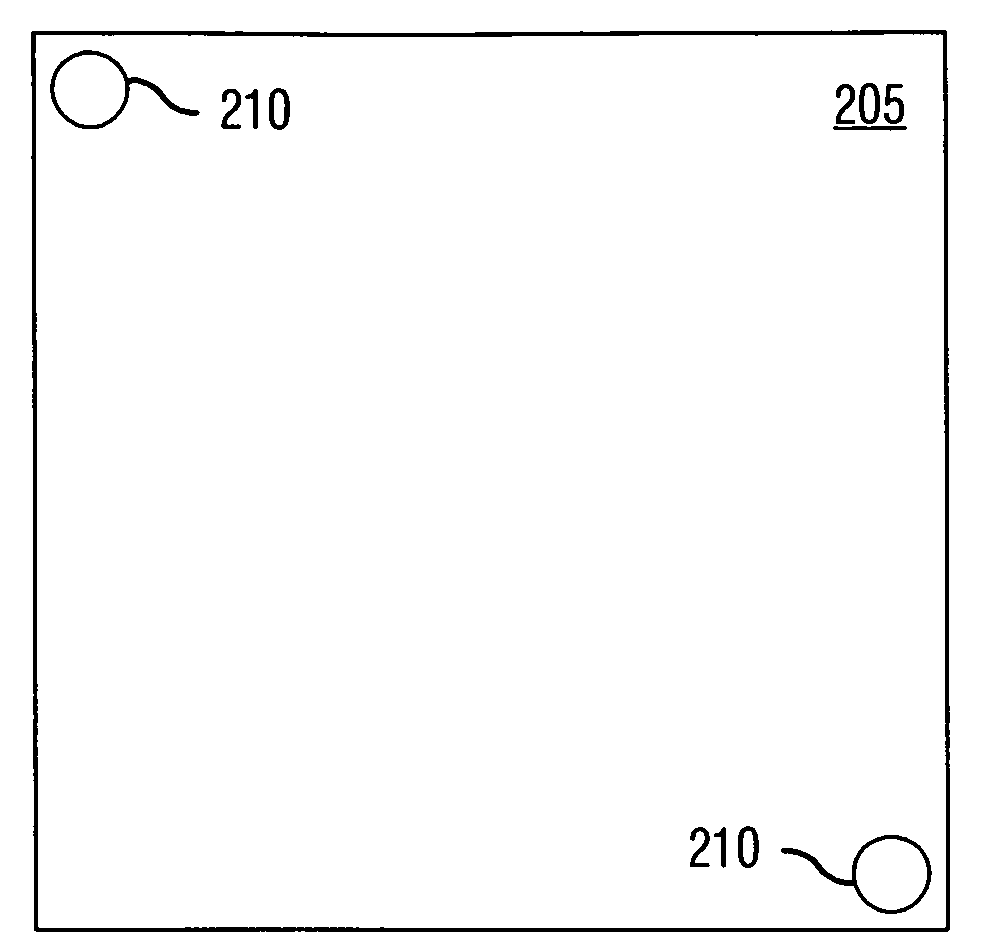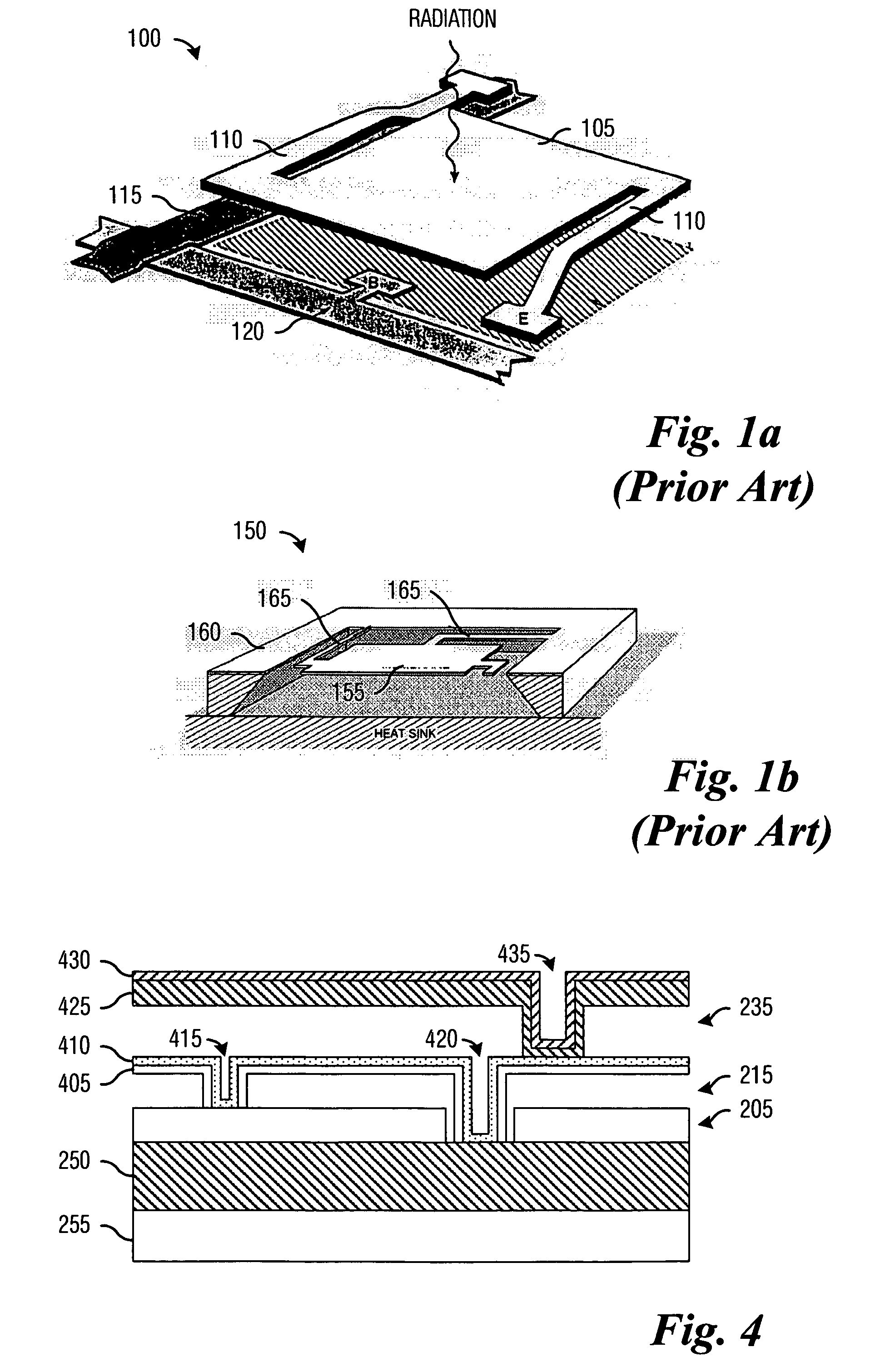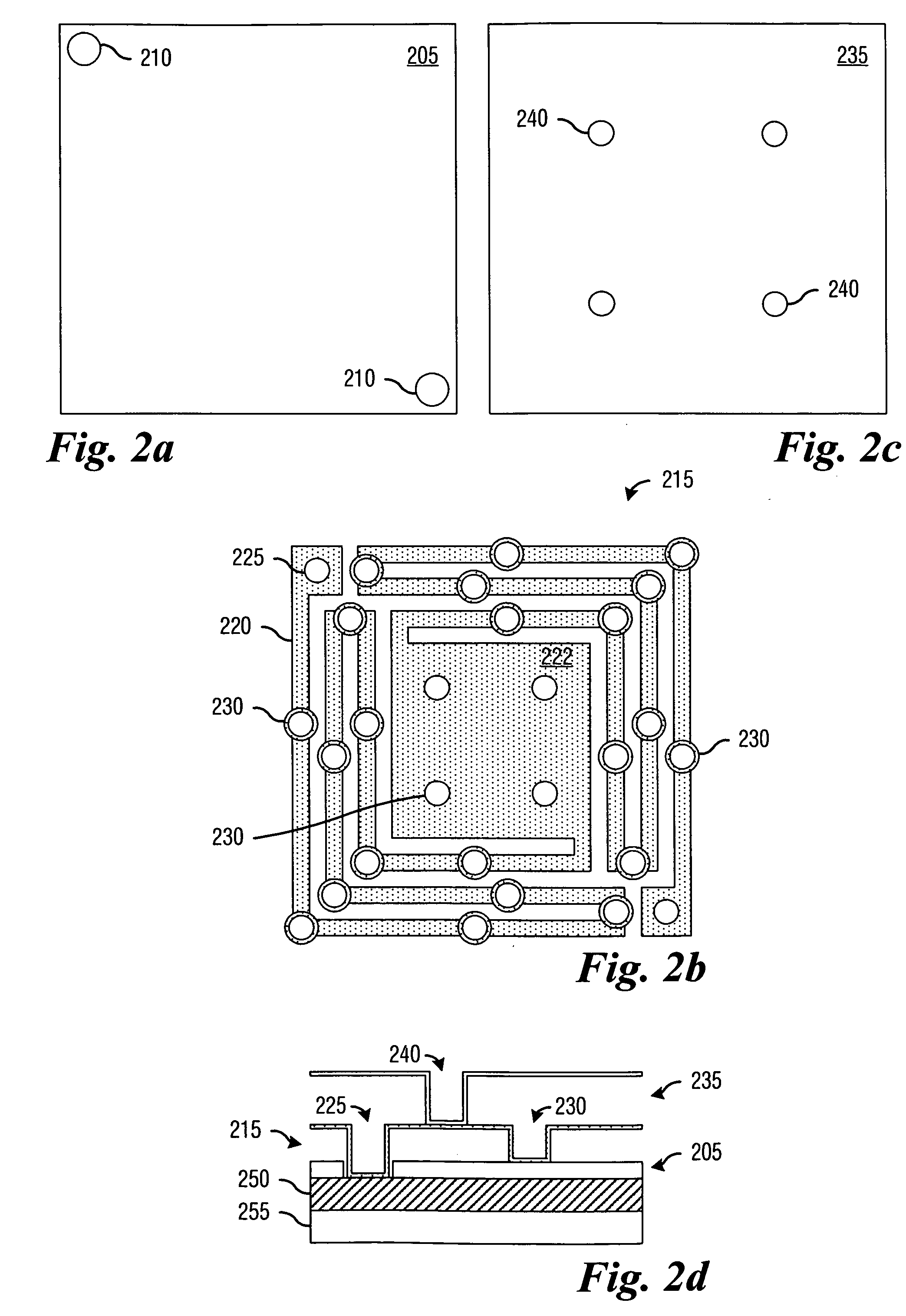System and method for radiation detection and imaging
- Summary
- Abstract
- Description
- Claims
- Application Information
AI Technical Summary
Benefits of technology
Problems solved by technology
Method used
Image
Examples
Embodiment Construction
[0024]The making and using of the presently preferred embodiments are discussed in detail below. It should be appreciated, however, that the present invention provides many applicable inventive concepts that can be embodied in a wide variety of specific contexts. The specific embodiments discussed are merely illustrative of specific ways to make and use the invention, and do not limit the scope of the invention.
[0025]The present invention will be described with respect to preferred embodiments in a specific context, namely a high fill factor thermal sensor array with a low thermal mass and fast response time. The size of each thermal sensor pixel in the thermal sensor array can be scaled without incurring dramatic increases in cost or manufacturing difficulty. These thermal sensor arrays may be referred to as micro electromechanical systems.
[0026]With reference now to FIGS. 2a through 2d, there are shown diagrams illustrating a cross-sectional view of a single pixel of a thermal sen...
PUM
 Login to View More
Login to View More Abstract
Description
Claims
Application Information
 Login to View More
Login to View More - R&D
- Intellectual Property
- Life Sciences
- Materials
- Tech Scout
- Unparalleled Data Quality
- Higher Quality Content
- 60% Fewer Hallucinations
Browse by: Latest US Patents, China's latest patents, Technical Efficacy Thesaurus, Application Domain, Technology Topic, Popular Technical Reports.
© 2025 PatSnap. All rights reserved.Legal|Privacy policy|Modern Slavery Act Transparency Statement|Sitemap|About US| Contact US: help@patsnap.com



